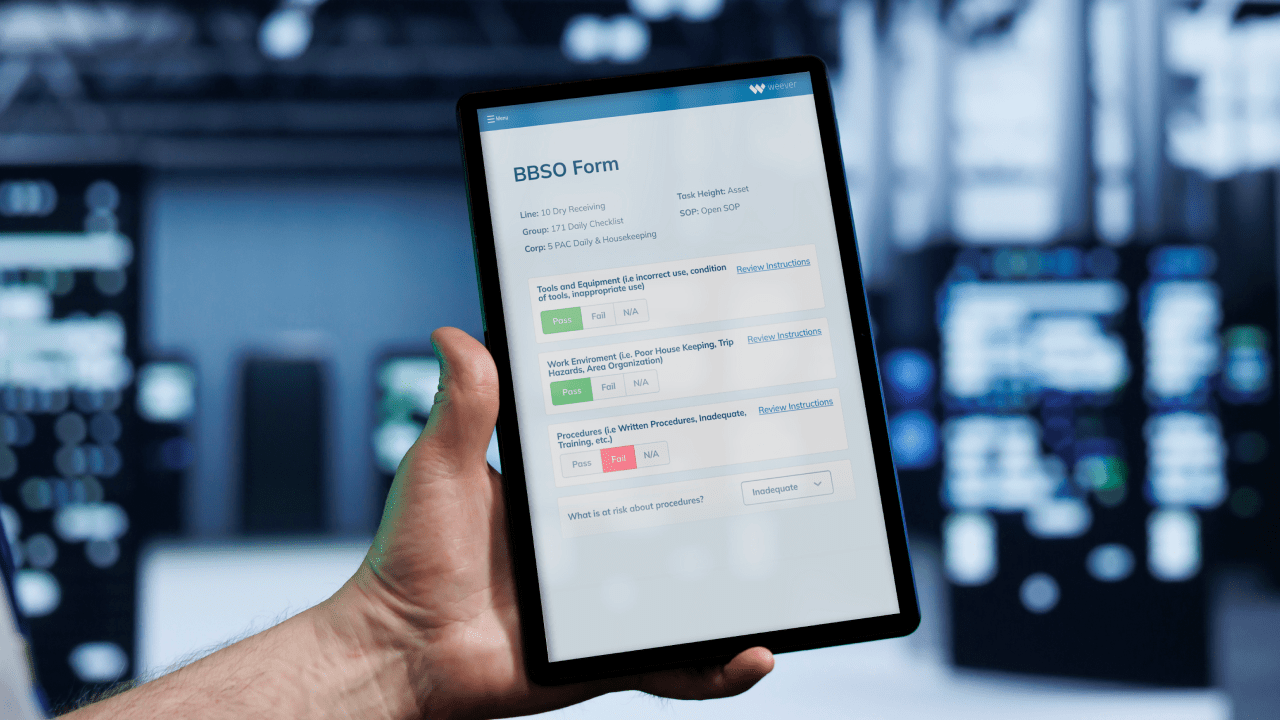Operational Excellence
How Near Miss Reporting Software Can Transform Your Manufacturing Processes
How Near Miss Reporting Software Can Transform Your Manufacturing Processes Transform manufacturing safety and efficiency with Weever’s Near Miss Reporting Software. Discover operational benefits and enhanced reporting processes. In the manufacturing industry, near miss reporting is a critical practice that involves identifying and documenting incidents that could have resulted in injury or damage but did…
Read MoreHow Predictive Maintenance is Revolutionizing Manufacturing Operations
How Predictive Maintenance is Revolutionizing Manufacturing Operations Explore how predictive maintenance enhances manufacturing efficiency and reliability with Weever’s configurable solutions. In the manufacturing industry, maintaining equipment and machinery is critical to ensuring smooth operations and avoiding costly downtime. Traditionally, maintenance strategies have ranged from reactive approaches, where issues are addressed after they arise, to proactive…
Read MoreThe Future of Manufacturing: Embracing Integrated Work Systems
Proactive safety is about preventing incidents before they occur. What are some simple and practical steps you can take to be more proactive now?
Read MoreTailoring Program Templates for Diverse Manufacturing Needs
Proactive safety is about preventing incidents before they occur. What are some simple and practical steps you can take to be more proactive now?
Read MoreThe Role of Integrated Work Systems in Modern Manufacturing
The Role of Integrated Work Systems in Modern Manufacturing Discover the role of integrated work systems in modern manufacturing, powered by Industry 4.0. Enhance efficiency, quality, and flexibility with Weever. Modernizing your manufacturing practices is vital for staying competitive, as they enhance efficiency, quality, and flexibility. Integrated work systems (IWS) play a crucial role in…
Read MoreTransforming Manufacturing with Integrated Work Systems: Benefits and Best Practices
Transforming Manufacturing with Integrated Work Systems: Benefits and Best Practices Transform manufacturing by making Weever part of your integrated work system. Improve communication, reduce errors, and manage resources efficiently. Integrated work systems are a powerful tool in the manufacturing industry, combining various processes, tasks, and technologies into one seamless system. These systems help manufacturers streamline…
Read MoreThe Future of Manufacturing: Leveraging Predictive Maintenance for Enhanced Efficiency
The Future of Manufacturing: Leveraging Predictive Maintenance for Enhanced Efficiency Enhance manufacturing with predictive maintenance. Learn how Weever’s software integrates data collection and analysis to not only prevent, but predict equipment failures. Predictive maintenance is a game-changer in the manufacturing industry. Unlike traditional reactive maintenance, which fixes problems after they occur, predictive maintenance anticipates issues…
Read MoreHow Near Miss Reporting Software Can Transform Your Manufacturing Safety Culture
How Near Miss Reporting Software Can Transform Your Manufacturing Safety Culture Discover how Weever’s Near Miss Reporting software transforms manufacturing safety with digital data capture, automated tasks, and real-time insights for a proactive safety culture. Safety in manufacturing is crucial for protecting employees and maintaining efficient operations. Weever’s Near Miss Reporting software helps identify and…
Read MoreTop Features in Near Miss Reporting Software for Manufacturing
Top Features in Near Miss Reporting Software for Manufacturing Discover top features in near miss reporting software for manufacturing. Learn how Weever’s solutions improve safety, streamline reporting, and boost efficiency. In manufacturing, near miss reporting software is crucial for preventing accidents and enhancing safety. By capturing and analyzing incidents that almost led to accidents, manufacturers…
Read MoreHow a Configurable Program Template Can Transform Your Manufacturing Operations
Proactive safety is about preventing incidents before they occur. What are some simple and practical steps you can take to be more proactive now?
Read More








